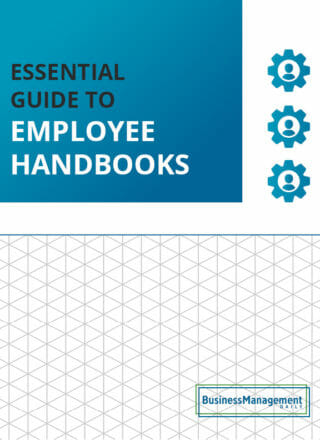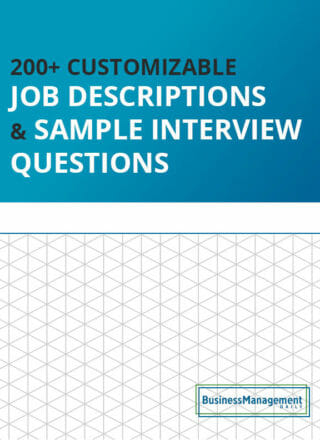Avoid legal issues with compliant job descriptions
Why accurate job descriptions are critical for legal compliance
Job descriptions provide an overview of a job’s core duties and expectations and play a crucial role in legal compliance. They help convey the critical components of the job to potential applicants.
However, they also serve some crucial purposes regarding legal compliance with laws such as the Fair Labor Standards Act (FLSA) and the Americans with Disabilities Act (ADA).
Accurate and up-to-date job descriptions are essential for complying with the law. Specifically, these descriptions clearly explain the job’s requirements. Furthermore, they help determine how to classify employees appropriately.
Due to the ever-changing nature of employment law, keeping up with the various legal issues related to job descriptions can take a lot of work.
This complexity underscores the need for HR professionals to stay updated and adapt their practices to ensure legal compliance, fostering a sense of continuous learning and improvement.
Legal issues to consider when crafting job descriptions
Compliance concerns govern what should or should not be included in job descriptions. Written job descriptions are also crucial for supporting other compliance processes, such as disability accommodations, FMLA leave, and compensation management.
Fair Labor Standards Act Compliance
The Fair Labor Standards Act (FLSA) is a federal law that provides important guidelines regarding labor issues such as compensation, employment classification, child labor, etc.
Employee classification is the primary concern regarding the FLSA when creating and updating job descriptions. Job descriptions should typically state whether the role is considered exempt or nonexempt from overtime compensation.
The exemption status of a role depends on the job duties and requirements of the position. With a written, up-to-date job description, you can quickly and accurately evaluate whether an employee qualifies as exempt.
In the event of a DOL investigation, not having an up-to-date job description that both the employee and employer are aware of can be a significant problem. Suppose you’re not on the same page.
In this case, the employee might provide a different account of their duties to a DOL investigator. For example, they might describe a different mix of responsibilities. This could result in a significant overtime bill. This happens if the DOL decides the employee was incorrectly classified as exempt.
This highlights the urgency and importance of crafting compliant job descriptions to avoid costly consequences.
Job descriptions should take these exemptions into account:
- Administrative exemption: Qualifying administrative employees may be classified as exempt if their primary duty is office or non-manual work, and they may exercise discretion and independent judgment concerning matters of significance.
- Executive exemption: Employees qualify for an executive exemption if they have a primary duty of managing the enterprise or recognized department, regularly direct the work of two or more full-time employees, and have the authority to hire and fire workers.
- Highly compensated employee exemption: Employees are considered highly compensated if they earn at least $684 per week, paid on a salary or fee basis, and at least $107,432 in total annual compensation.
- Professional exemption: Learned professionals or creative professionals who earn the minimum pay rate. Creative professionals must perform work requiring invention, imagination, originality, or talent in a recognized artistic or creative field. Learned professionals must complete work that requires advanced knowledge in a field.
- Other role-specific exemptions: Those designated for outside sales and computer professionals.
Americans with Disabilities Act Compliance
The Americans with Disabilities Act protects employees and applicants with disabilities from job discrimination. The ADA requires employers to offer reasonable accommodations for disabled applicants or employees to perform the job’s essential functions.
Non-essential job functions do not have to be performed. Thus, disabled workers must know which tasks are classified as essential during the application stage and throughout employment.
The ADA does not require an employer to develop or maintain job descriptions. However, having one in place can be helpful for ADA compliance.
You should prepare a written job description before advertising a job or interviewing applicants. This description will then serve as evidence in determining essential functions and other relevant factors.
In the description, list and categorize the essential and non-essential functions. This usually gives the employer an advantage. More specifically, courts often defer to your designation of essential and non-essential functions.
However, in the event of a dispute over the job description, it’s essential to have a transparent process to resolve such disputes. This can involve reviewing the job duties with the employee, consulting with legal counsel, or seeking a third-party opinion.
A transparent process for handling job description disputes can help employers navigate potential legal issues.
Family and Medical Leave Act Compliance
The Family and Medical Leave Act (FMLA) is a federal law that allows eligible employees to take job-protected unpaid leave for specific family or medical reasons. Employees may request FMLA leave due to a severe health condition. In these cases, a medical provider must submit documentation.
This documentation must affirm that the employee’s health condition impacts their ability to perform their job. More specifically, it must confirm that the condition affects their capacity to perform the essential functions of their role.
To do this, the provider needs to review an up-to-date job description. This allows them to understand the critical functions of the role.
Pregnant Workers Fairness Act
The Pregnant Workers Fairness Act (PWFA) is a federal law that protects pregnant employees and requires reasonable accommodations for pregnancy-related conditions.
A job description listing the essential and non-essential functions can help employers, medical providers, and pregnant employees assess what can and cannot be done during pregnancy.
However, remember that the PWFA dictates that some essential functions may have to be reassigned or dropped as a reasonable accommodation during pregnancy or postpartum.
Equal Pay Act Compliance
The Equal Pay Act (EPA) is the primary law guaranteeing equal pay for equal work. When jobs are equivalent, a difference in pay must be due to a factor other than sex. Job descriptions are used to determine equivalence.
A federal court recently ruled that using past salary history to determine the current salary level for new hires violates the Equal Pay Act, and many states and cities have enacted similar requirements. When setting pay, review what others in the same classification and similar positions receive.
USERRA Compliance
The Uniformed Services Employment and Reemployment Rights Act of 1994 (USERRA) prohibits discrimination against service members. It also guarantees job return after service with additional time away for injured service members.
The USERRA escalation clause protects returning service members. It states that they are entitled to any promotions and pay raises they would have received during their service. Therefore, employers should review and update job descriptions upon a service member’s return.
This ensures the descriptions reflect any necessary changes or promotions. Ultimately, this helps provide a smooth transition for the returning employee.
How to craft a compliant job description
Considering the legal issues discussed above, you can follow these steps to create a job description.
Categorize the essential and non-essential functions
Job descriptions list essential functions. These functions may be used to determine eligibility for ADA accommodations and FMLA leave. Therefore, it is important to clearly list the vital functions of the role.
Additionally, you must differentiate these from non-essential functions. The job description should also be updated any time these substantially change.
Limit language regarding attendance
It’s best to avoid using strong language about attendance policies in your job descriptions. Statements such as “regular attendance is an essential function of this role” may cause compliance challenges.
The FMLA, ADA, and many state workers’ comp systems excuse some absences under their coverage. The Equal Employment Opportunity Commission has also assumed that working from home can often substitute for regular attendance. As such, it’s best to leave attendance off your essential functions list, as it will generally not hold up if challenged.
List a salary range if required
Many states and cities now have salary transparency laws. These laws require employers to disclose salary ranges for open roles. Therefore, you should check your state and local laws. This will help you understand whether your job description needs to include compensation information.
Some states with pay transparency laws require employers to disclose salary ranges when asked or during interviews. In contrast, others, like California and New York, require that the expected pay be listed in the job listing.
Take advantage of DOL job description tools
If you’re unsure where to start writing a job description, take advantage of the Department of Labor’s job description tool. You select an occupation or job title and enter your state, then it will guide you through a step-by-step process of creating a relevant job description.
This tool provides a great starting point, but you’ll still need to review it for accuracy and add some additional details to create a well-rounded compliant job description. You’ll also need to determine the employment classification and add it to the job description.
The tool will provide a generic list of common job duties for the role. However, you’ll need to indicate which are essential functions and add any that may not be included in the standard list.
Decide whether to add a catchall statement
Many employers add a broader, catchall statement in their job descriptions. This often reads as “other duties as assigned” or something similar. It’s meant to cover as-needed duties that pop up throughout the course of employment.
Because it’s such a vague statement, courts generally don’t consider this catchall as an essential function of the job. Therefore, those added duties are usually regarded as non-essential and ignored when determining a reasonable accommodation or approving FMLA leave. However, there is a recent federal court decision
However, a recent federal court decision considers those other duties essential. The case involved a night receptionist at an assisted living facility whose other duties as assigned included helping during the center’s evening meal.
The court ruled that the employer had proved that all-night receptionists were required to help with these meals and thus considered it essential.
Update the job description regularly
Job descriptions are often created as part of a recruiting effort. However, job duties can change once someone is staffed in the role. Having an up-to-date job description is important if an ADA, FMLA, or FLSA issue arises where the essential functions listed in the job description will be used to decide.
That’s why it’s a compliance best practice to review and update job descriptions for all employees at least once per year or anytime changes are made.
More resources:
AI job descriptions: How to write them faster and avoid bias![]()
Key considerations when updating a job description ![]()
Sample proofreader job description and interview questions ![]()
Want more insights like these? Visit Kaylyn McKenna’s author page to explore her other articles and expertise in business management.






